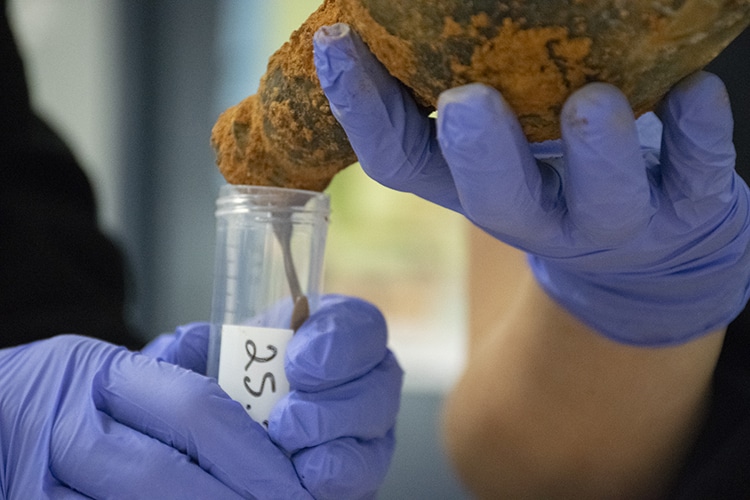In May 2024, the archeological community recieved exciting news. Buried in an old cellar beneath George Washington's home of Mount Vernon lay two bottles crafted in the 18th century. Within the sealed bottles, archeologists discovered the remains of cherries picked before the founding of the United States. While this discovery was thrilling, the ongoing work to preserve the historic home has turned up another, even more incredible find. Buried in five storage pits of the cellars were 35 bottles, 29 of which contain preserved fruits from the founding father's lands. The find has the potential to affect everything from botany to how scholars interpret the history of Virginia.
The bottles were discovered during the Mansion Revitalization Project, a long-term effort to shore up the centuries-old home to withstand constant tourism. They were found in the cellar region, and they appear to contain cherries and other kinds of berries. Preservation was an important way to store food in pre-refrigerator days. Scientists are anxious to study the contents, so they have been extracted and placed into refrigeration. The United States Department of Agriculture’s Agricultural Research Service plans to help analyze these biological remains. The limited analysis conducted so far has found cherry stems, pits, and pulps as well as evidence of cutting the stems with scissors.
Further study will reveal whether any pits might be able to propagate, as well as the DNA of the historic fruit. “These artifacts likely haven’t seen the light of day since before the American Revolution, perhaps forgotten when George Washington departed Mount Vernon to take command of the Continental Army,” Mount Vernon President & CEO Doug Bradburn said in a statement. Beyond demonstrating what plant varieties the first president dined on, the find can shed light on the lives of others who lived on the property. Mount Vernon Principal Archaeologist Jason Boroughs noted, “These extraordinary discoveries continue to astonish us. These perfectly preserved fruits picked and prepared more than 250 years ago provide an incredibly rare opportunity to contribute to our knowledge of the 18th-century environment, plantation foodways, and the origins of American cuisine.”
He continued, “The bottles and contents are a testament to the knowledge and skill of the enslaved people who managed the food preparations from tree to table, including Doll, the cook brought to Mount Vernon by Martha Washington in 1759 and charged with oversight of the estate’s kitchen.” As work continues on the mansion, perhaps more finds will continue to shed light on life there in the 18th century.
Underneath George Washington's Mount Vernon estate, 35 bottles were discovered.
Researchers are excited by this find, hoping to study the contents of the bottles and gain more insight into 18th-century agriculture, food history, tools used, and more.
“These artifacts likely haven’t seen the light of day since before the American Revolution, perhaps forgotten when George Washington departed Mount Vernon to take command of the Continental Army,” says Mount Vernon president & CEO Doug Bradburn.
29 of the 35 bottles contained shockingly well-preserved fruits from the 18th century, including cherries and other berries.
“These perfectly preserved fruits picked and prepared more than 250 years ago provide an incredibly rare opportunity to contribute to our knowledge of the 18th-century environment, plantation foodways, and the origins of American cuisine,” says Mount Vernon principal archaeologist Jason Boroughs.
h/t: [Smithsonian Magazine]
Related Articles:
Discover the Hallaton Helmet, a Newly Restored Piece of Ancient Roman Armor
3.6-Million-Year-Old Preserved Hominid Footprints at Risk of Obliteration by Climate Change
Vogelherd Horse: The World’s Oldest Known Horse Carving From 32,000 Years Ago
130,000-Year-Old Carved Bear Bone May Be the Earliest Neanderthal Art






























































































